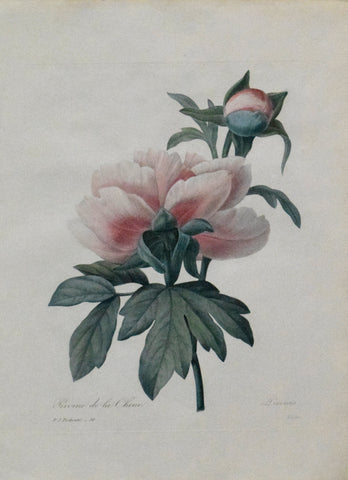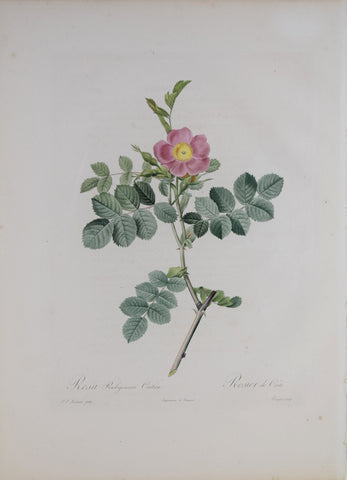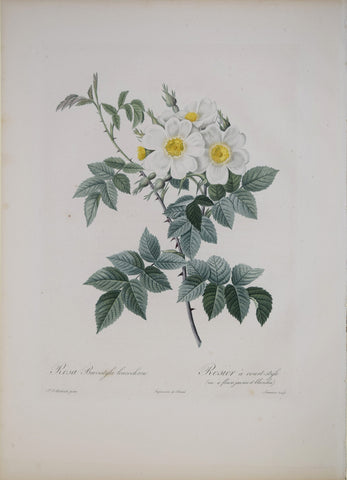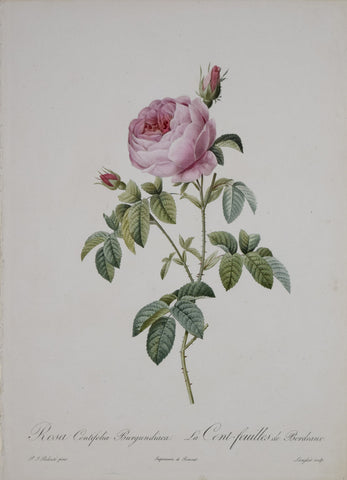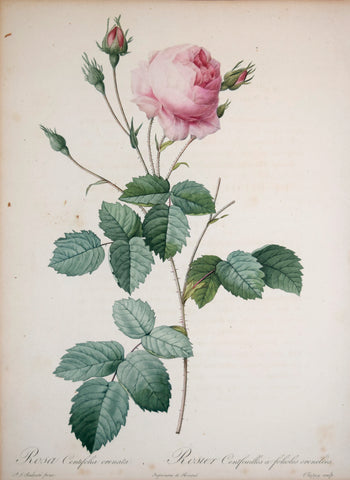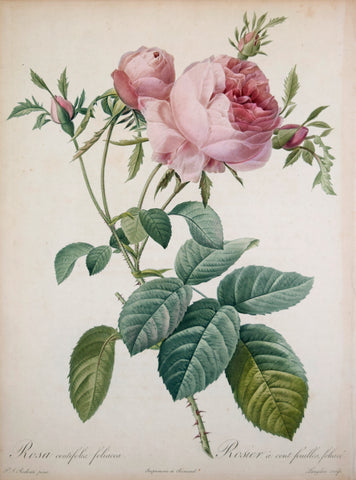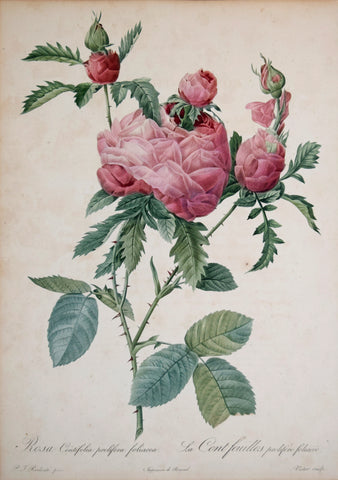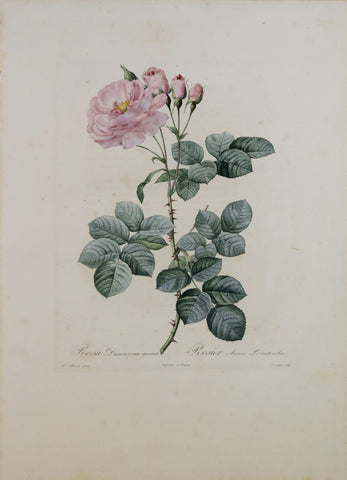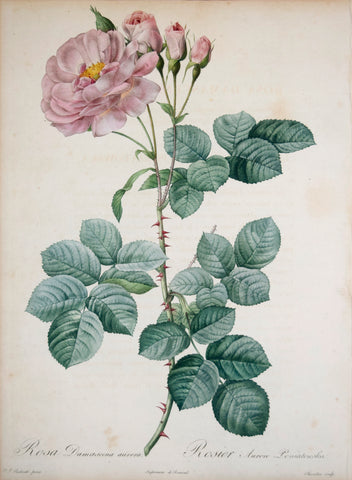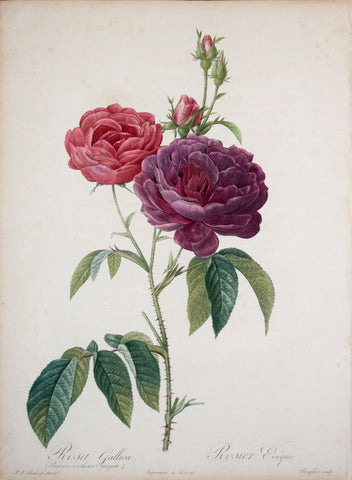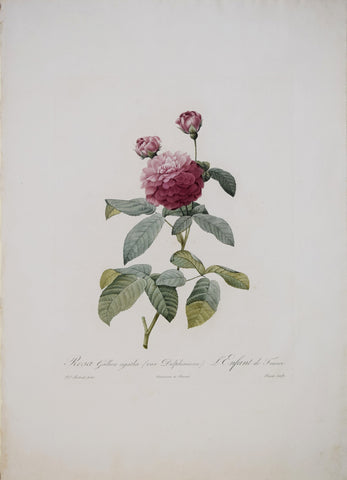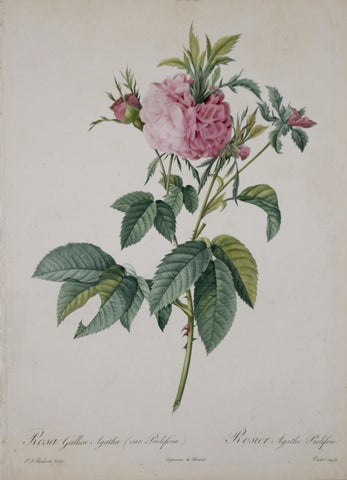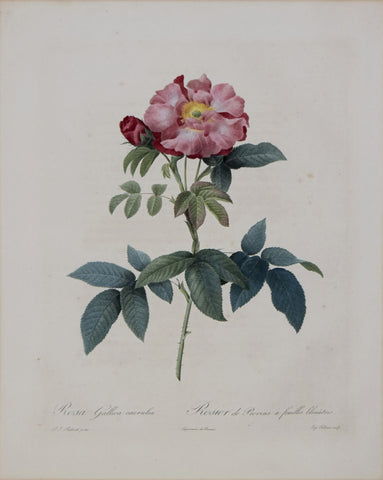Search By Artist
Pierre-Joseph Redouté (1759-1840), Les Roses
Les Roses
Paris, 1817-24
Stipple engravings with original hand-coloring.
Pierre-Joseph Redouté's Roses are perhaps his most celebrated images, which the artist issued while under the patronage of the Empress Josephine, wife of Napoleon. The present selection comprises the three images that are often considered the most magnificent roses that Redouté ever painted and engraved. Certain common themes run through them. In each, the flowers are classical "portraits" which lack backgrounds or settings. The regal simplicity of the compositions allows the viewer to focus without distraction on the beauty and delicate complexity of the plants themselves. Perhaps better than any other engravings that the artist ever made, these three images demonstrate the flawless and pristine French style of botanical art that Redouté pioneered and brought to a pinnacle of quality.
Redouté (1759-1840) is unquestionably the best-known botanical illustrator of any era. The decorative appeal of his original engravings has led to their modern reproduction, which in turn has popularized Redouté's work in a way unique among botanical artists. Yet no reproduction can capture the great and subtle beauty of his original engravings from Les Roses, nor can any introductory paragraph fully describe his many achievements. These magnificent engravings demonstrate the full mastery of his abilities, as the forms of the roses are set off dramatically by Redouté's masterful and rich modulations of tone and hue.
Born into a family of artists in what is now Belgium, Redouté's talent was recognized and encouraged from an early age. Eventually, Redouté had, as pupils or patrons, five queens and empresses of France, from Marie-Antoinette to the Empress Josephine and her successor, Marie-Louise. Despite many changes of regime in a turbulent epoch, he worked without interruption, eventually contributing to over fifty works on natural history and archeology.
The luminosity of stipple engraving, a technique perfected by Redouté, is particularly suited to the reproduction of botanical detail. The medium involved engraving a copper plate with a dense grid of dots that could be modulated to convey delicate gradations of color. Because the ink rested on the paper in miniscule dots, it did not obscure the "light" of the paper beneath the color. After this complicated printing process was complete, the prints were finished by hand in watercolor, so as to conform to the exquisite models Redouté provided.

